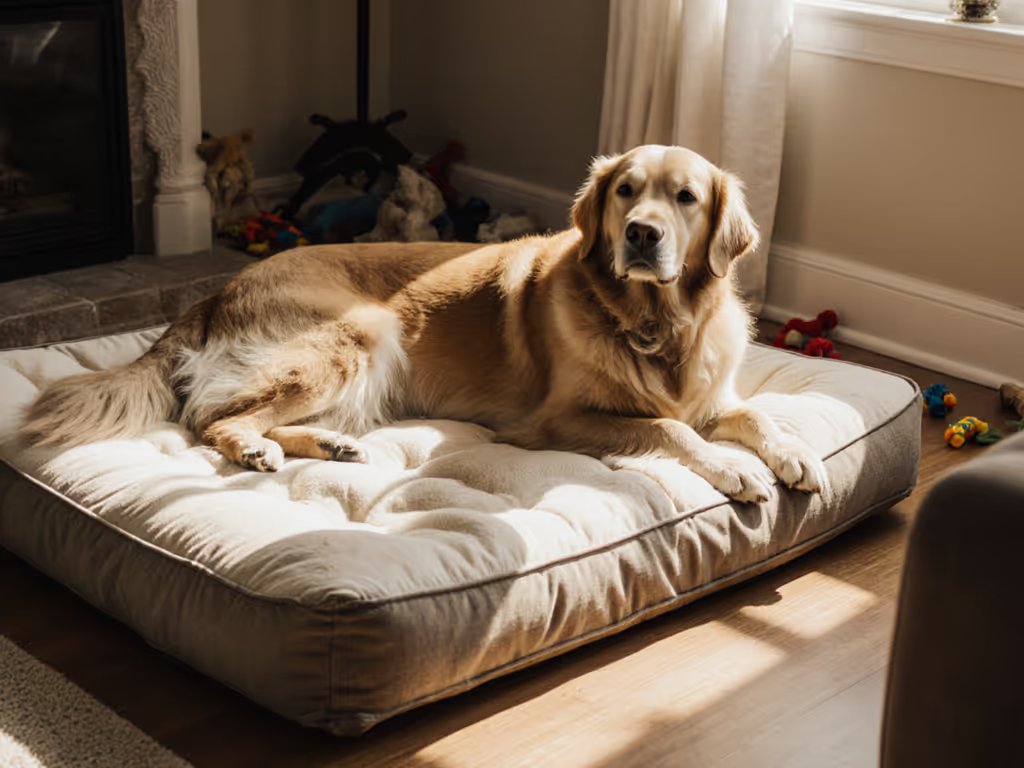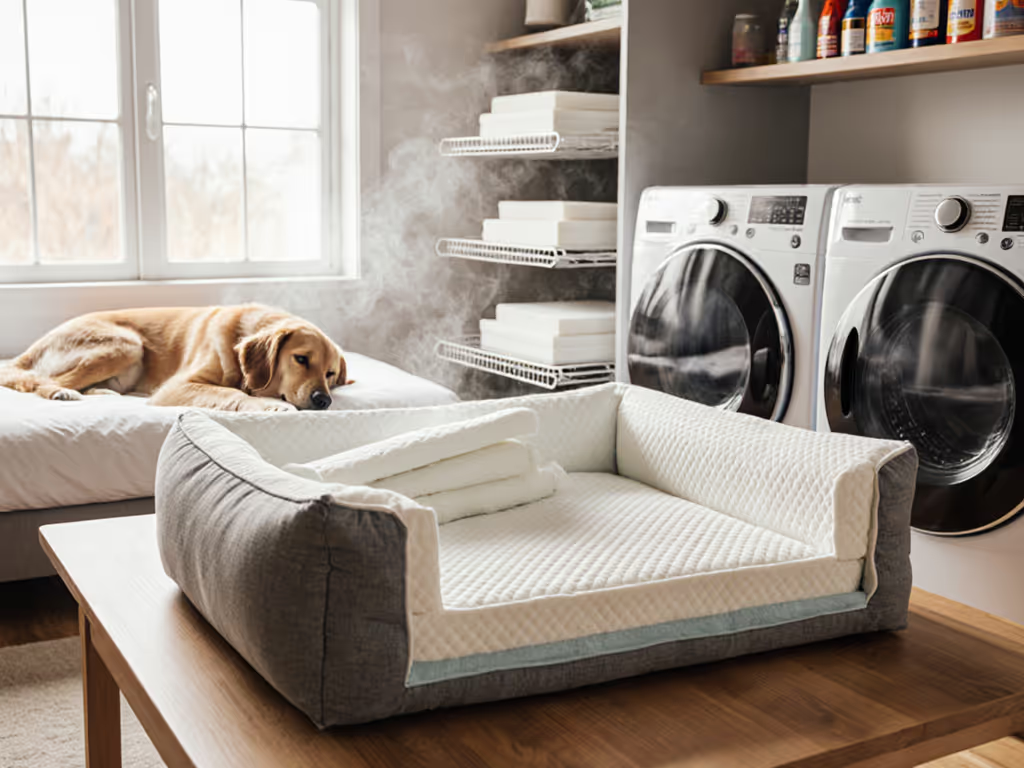
Coat-Specific Dog Bed Fabrics: Prevent Hair Traps & Overheating
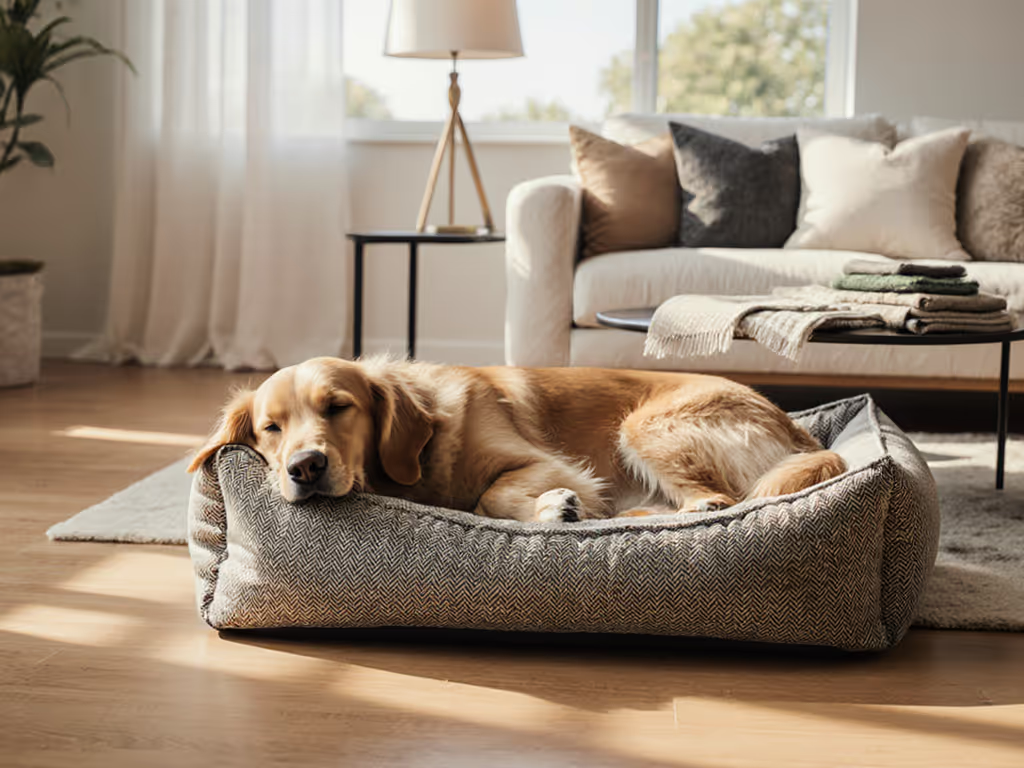
Choosing the right dog bed material by coat type is the difference between a pup who paces endlessly and one who sleeps soundly through the night. Your dog bed for long hair needs shouldn't force you to choose between comfort and practicality, especially when shedding season turns every nap spot into a fur minefield. I've seen countless pet parents frustrated when their expensive bed becomes a hair magnet within days (or worse) when their dog abandons it because they're overheating. Start simple, fit the climate, reward the rest.
Understanding Your Dog's Natural Cooling System
Dogs don't sweat like humans; they regulate temperature primarily through their paw pads and by panting. When trapped against an inappropriate fabric, your dog's natural cooling gets compromised. For a year-round plan that matches materials to weather swings, see our seasonal dog bed guide. Thick, plush beds that seem cozy actually create a heat trap that can raise your dog's core temperature by several degrees.
Key fabric considerations by coat type:
Long-Haired Breeds (Golden Retrievers, Collies, Pomeranians)
These dogs already carry insulation in their coats. Adding heat-trapping fabrics creates a double-whammy of overheating risk and stubborn hair embedding.
Never pair a long-haired dog with fleece, plush, or sherpa fabrics: they are essentially giving your dog a permanent hug that they can't escape from. The hair embeds so deeply that even vigorous brushing won't dislodge it.
Double-Coated Dogs (Huskies, Malamutes, Shiba Inus)
These breeds have both an undercoat and topcoat that work together to regulate temperature. In summer, they're designed to release loose undercoat while the topcoat deflects heat.
Smooth-Coated Dogs (Boxers, Bulldogs, Dalmatians)
These dogs rely on environmental cooling since they lack significant coat insulation. They need fabrics that maximize airflow directly against their skin.
Hairless Breeds (Xolos, Chinese Cresteds)
These dogs need gentle fabrics that won't irritate sensitive skin while still allowing proper skin breathing.
The Climate Connection You're Missing
Your location matters as much as your dog's coat type. I once worked with a family in Phoenix whose husky refused to sleep anywhere but their tile bathroom floor. Their mistake? A thick, plush bed marketed as "premium comfort" that turned into a sauna at 90°F.
Climate-appropriate fabric chart:
| Climate Zone | Best Fabrics | Worst Fabrics |
|---|---|---|
| Hot/Humid | Cotton, Linen, Bamboo, Lightweight Microfiber | Fleece, Sherpa, Heavy Plush |
| Temperate | Microfiber, Canvas, Twill | Thick Sherpa, Memory Foam w/ Non-Breathable Cover |
| Cold/Dry | Fleece, Wool Blends, Sherpa (with removable layer) | Vinyl, Heavy Denim |
| Variable Seasons | Removable Covers with Seasonal Swaps | One-Season Fabric Beds |
Your Hair-Trapping Fabric Audit
Before you replace your entire bed, run this simple check:
- The Hand Test: Press your palm firmly against the bed fabric for 10 seconds. If visible hair remains after lifting your hand, the fabric is too "sticky."
- The Light Test: Shine a flashlight across the fabric at a low angle. If you see tiny fibers catching the light like Velcro, it's a hair trap.
- The Vacuum Test: Vacuum the bed thoroughly. If significant hair remains embedded after multiple passes, the fabric is problematic. To keep shedding from becoming an odor and cleanup nightmare, follow our washable dog bed care guide.
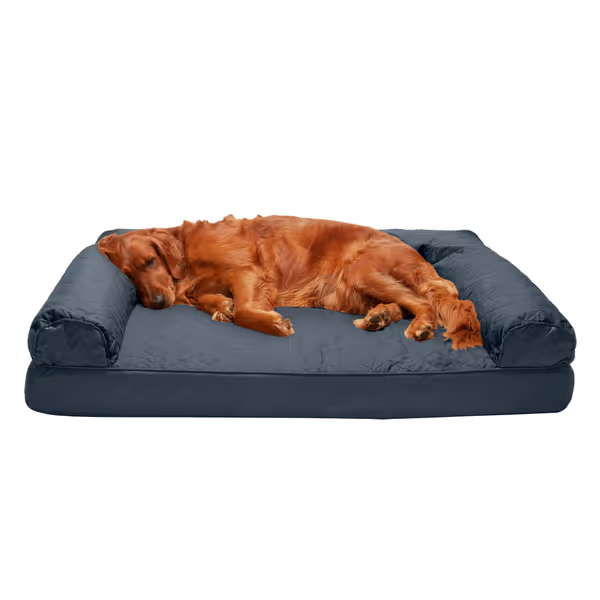
Furhaven Orthopedic Bolster Dog Bed
Fabric Solutions by Coat Type
For Long-Haired Dogs
Microfiber is your secret weapon: its tight weave prevents hair from embedding while still feeling soft under paws. Look for 200+ thread count microfiber that's smooth to the touch (not peached or brushed).
Pro tip: Pair with a cooling gel insert during summer months for your cooling dog bed solution. This combination addresses both hair retention and temperature regulation.
For Double-Coated Dogs
Cotton canvas offers the perfect balance: durable enough to withstand seasonal shedding cycles while providing sufficient airflow. The natural fibers breathe better than synthetics in warm weather while providing enough texture for dogs who like to "fluff" their sleeping area.
For Short-Haired Dogs
Linen-blend fabrics create gentle airflow channels against their skin. These fabrics wick moisture away while feeling cool to the touch, ideal for breeds prone to hot spots.
For Allergy-Prone Dogs
Organic cotton with OEKO-TEX certification prevents chemical irritation while allowing maximum breathability. Avoid any "stain-resistant" treatments that compromise airflow.
Your 3-Step Bed Onboarding Checklist
Transform rejection into routine in just 7 days:
Days 1-2: Climate Matching
- Place bed in coolest part of room (away from vents/windows)
- Add breathable cotton sheet for immediate airflow
- Use fan on low setting nearby to create gentle airflow
Days 3-5: Placement Refinement
- Gradually move bed 6 inches daily toward desired location
- Pair with consistent verbal cue: "Place" works better than "Bed"
- Anchor with non-slip mat to prevent sliding anxiety For room-by-room placement tips, see our optimal dog bed placement guide.
Days 6-7: Routine Reinforcement
- Feed meals on or beside bed
- Offer stuffed Kong only when on bed
- Keep initial sessions brief (5-10 minutes)
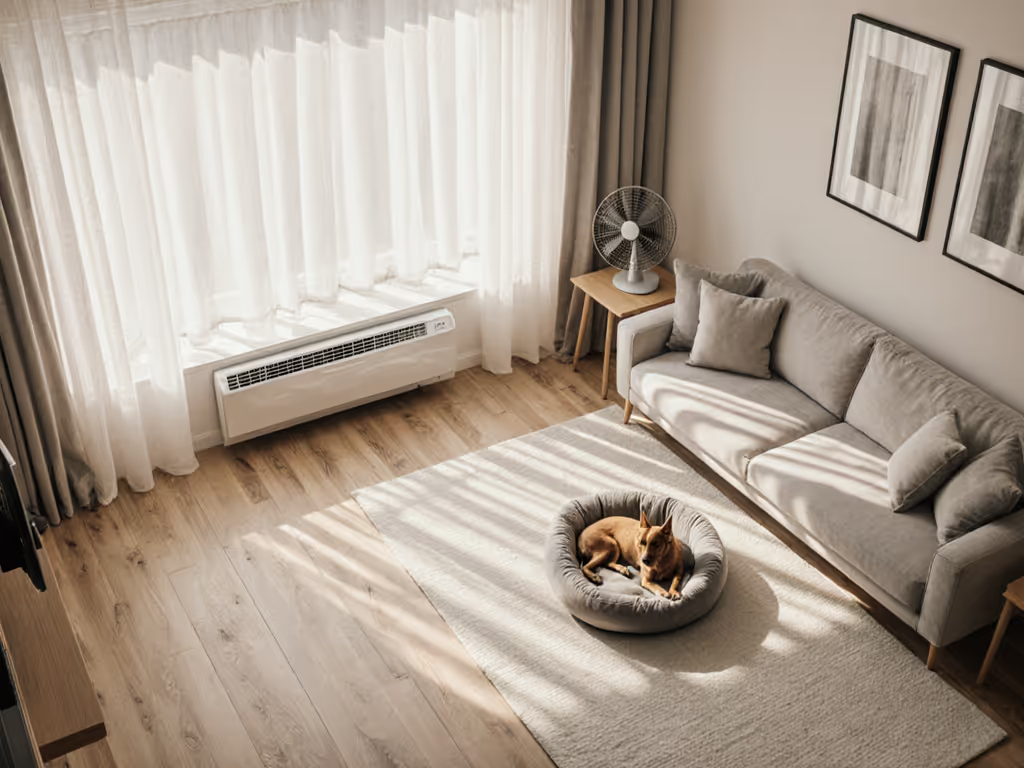
I remember working with a nervous rescue who would pace and pant past midnight, until we swapped his heat-trapping plush pad for breathable cotton and moved it from a drafty doorway to a quiet wall. The transformation was remarkable. Small changes, big relief.
What to Avoid (No Matter What Bed Sellers Claim)
- Fleece-lined beds for warm climates: They create a greenhouse effect, raising your dog's temperature by 3-5°F according to recent thermal testing
- Non-removable covers: Even "machine washable" beds become unusable when hair embeds in non-removable layers
- Memory foam with non-breathable covers: The foam itself insulates heat, trapping it under a non-breathable cover creates a convection oven effect
- Fragranced "freshness" treatments: These irritate sensitive nasal passages and provide false sense of cleanliness Learn which chemicals and treatments to avoid in our non-toxic dog bed safety guide.
Your Action Plan: Next 24 Hours
- Remove current bed cover and perform the hair-trapping audit above
- Wash cover in vinegar-water solution (1 cup vinegar to 1 gallon water) to remove embedded oils that attract hair
- Test airflow by placing thin cotton sheet over bed - your dog should accept this immediately
- Evaluate your climate zone against the fabric chart and plan your next purchase accordingly
Choosing the right fabric isn't about luxury, it is about respecting your dog's natural physiology. When you match materials to both coat type and climate, you solve the majority of sleep struggles before they start.
The best bed for dog comfort isn't necessarily the most expensive one, it is the one that breathes with them through every season. Your next step: spend 10 minutes observing where your dog naturally chooses to sleep in your home. That location holds important clues about their temperature preferences that will guide your fabric choice. Reward the rest.



